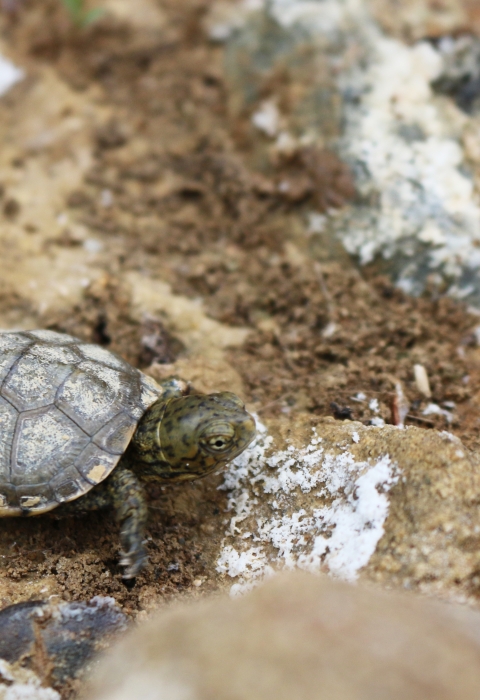Para la versión en español, haga clic aquí.
For immediate release
Media Contact: Olivia Beitelspacher, olivia_beitelspacher@fws.gov
Photos for media: https://flic.kr/s/aHBqjAvF4A
The U.S. Fish and Wildlife Service is reopening the public comment period seeking input on a proposal to list the northwestern pond turtle, which occurs in Washington, Oregon, Nevada, and northern and central California, and southwestern pond turtle, which occurs from Monterey County south to Los Angeles, Riverside and San Diego counties into northern Baja California, Mexico, as threatened under the Endangered Species Act.
The public comment period will now be open for an additional 30 days, closing May 5, 2024.
The Service is committed to having a robust public engagement process as it considers a proposal to list the two western pond turtle species. Reopening the public comment period gives all interested parties additional time to provide comments.
The Service is also seeking comments on a 4(d) rule that allows activities that support conservation of both species, including wildfire suppression and management, maintenance of existing livestock ponds, habitat restoration, and non-native species removal. The 4(d) rule would allow land managers and others to carry out these activities without the risk of violating the Endangered Species Act on their properties because they are expected to have beneficial or negligible impacts to pond turtles and their habitat.
The Service reviewed the best available science to evaluate the status of both species by preparing a Species Status Assessment, including information provided by species experts, to inform the proposed listing rule.
The assessment found that although the southwestern pond turtle and northwestern pond turtle are likely to sustain populations in the wild in the near term, both species have increasing risks of extinction due to population losses, decreased genetic diversity, and a reduced ability to adapt to changing environmental conditions in the next half century, thus warranting listing as threatened under the Endangered Species Act. Ongoing threats to both species include worsening drought conditions, habitat loss and fragmentation, and predation by invasive species invasive species
An invasive species is any plant or animal that has spread or been introduced into a new area where they are, or could, cause harm to the environment, economy, or human, animal, or plant health. Their unwelcome presence can destroy ecosystems and cost millions of dollars.
Learn more about invasive species such as non-native bullfrogs.
The Service encourages any interested parties to provide input and substantive comments during the reopened public comment period. The notice is available in the Federal Register under docket no. FWS-R8-E8-2023-0092.
The U.S. Fish and Wildlife Service works with others to conserve, protect and enhance fish, wildlife, plants and their habitats for the continuing benefit of the American people. For more information, visit www.fws.gov and connect with us on social media:
Facebook, Instagram, X (formerly known as Twitter), LinkedIn, Flickr, and YouTube.



